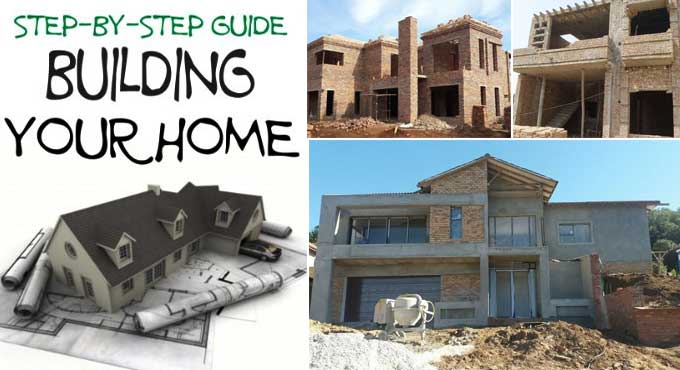
The Ultimate Step by Step Guide to Building a House ? From Foundations to the Roof

You can learn five simple steps, starting from contacting construction companies and setting your plans into motion, and right through to starting construction on your dream home.
1. Foundation & Excavation
You must hire some heavy movers to begin shaping the landscape. This step can be bypassed if the area already has houses built upon it, and there is no need for any major changes. You can already see the house's floor plan once all the dirt has cleared. An average remodel can take anywhere from one to four weeks, depending on how intricate the design is and if certain house portions are blocked off.
As walls build through excavation and backfill, waterproofing is an essential step. Building progress often causes the soil surrounding a foundation to be refilled beyond its original height, falling beneath the surrounding soil or water. When you install a waterproof membrane, you effectively prevent rising dampness by sealing water beneath the surface, as well as above it.
2. Framing
Frames provide the major help in building the vertical of the house if foundations and footings serve as the horizontal guide. Frames are the timber wall skeletons outlines built by carpenters. A floor, roof, door, and window track will lay as part of the framing.
As soon as you decide who you'll go with, the process begins.
? The floor timbers are laid across any walls and then raised upwards to create an outline similar to the walls.
? Metal strapping holds each wooden skeleton securely together - they need to be rigid enough to support the roof framing as well.
? Next, boards are erect for windows and doors.
3. Exterior Presentation
Tile or shingles must be used for the roof, and flashing of metal or lead must be applied to prevent additional leaks. You decide where and how your balcony or terrace should be placed.
The balcony can be made of concrete, timber, fiber cement sheets, steel, etc. It recommends that waterproof membranes are installed directly over the substrate before screening and tiling the falls.
4. Interior
Insulation: The wall framing will now require insulation batts to install before any drywall can be installed. It is relatively straightforward and won't take much expertise to accomplish this, but it's essential to act now. You can save on your energy bill and prevent leaks by investing in insulation or ventilation for your roof.
Piping & Lining: In the interior design phase of the project, the first sections you should cover are those for which you laid the foundation. There are no environmental or weather concerns due to the exterior, insulation, and dry-in process. Then you can set them up after a quick and compulsory safety inspection. You're only laying the groundwork with wires right now rather than connecting them with appliances and services.
1. The installation of permanent electrical fixtures.
2. Lines of communication.
3. Lines of TV.
4. Wiring for Internet access.
5. Sewerage & Plumbing.
6. You can install any security system you wish.
Flooring: There are no more major steps to the floor to complete after the completion of the walls. Any hardwood can be sourced, sanded, and finished. You can choose, installing, and maintaining vinyl, tile, stone, and ceramic tiles.
Plasterboard: A plasterboard wall is attached directly to a timber framework, like an actual wall. As soon as this happens, the walls complete only aesthetic additions, and finishing of fixtures like doors and windows are required.
5. Final Construction
Plumbing: If you have already installed flooring and fixtures in general, you can now call a plumber to complete the piping in any required areas. You will install your bathrooms, as well as the fixtures for your laundry room and kitchen.
Electricity: When the plumber has done the initial setup, the electrician will install power. After that, the electrician will finalize the remaining utilities to provide power, such as the air conditioner, the lighting, and the power points.
Water Supply: Whether you are building a water tank or a water supply, waterproofing is an important consideration to make sure it does its job correctly. There are several types of concrete water tanks, and most don't need any curing. The installation and the tank are ready to use within a few hours.
Conclusion
Having four walls and a roof is just the tip of the iceberg in defining a house. Knowing how a home builds allows you to make a more informed decision about its design. Understanding how it is constructed is the best research you can do in advance. Following completion of the project, your remaining duties are mostly inspections, payment or loan processing, and furnishing your new home. The effort of building a new home is over whether it is for you, your family, or an investment.
To learn more, watch the following video tutorial.
Homebuilding & Renovating


